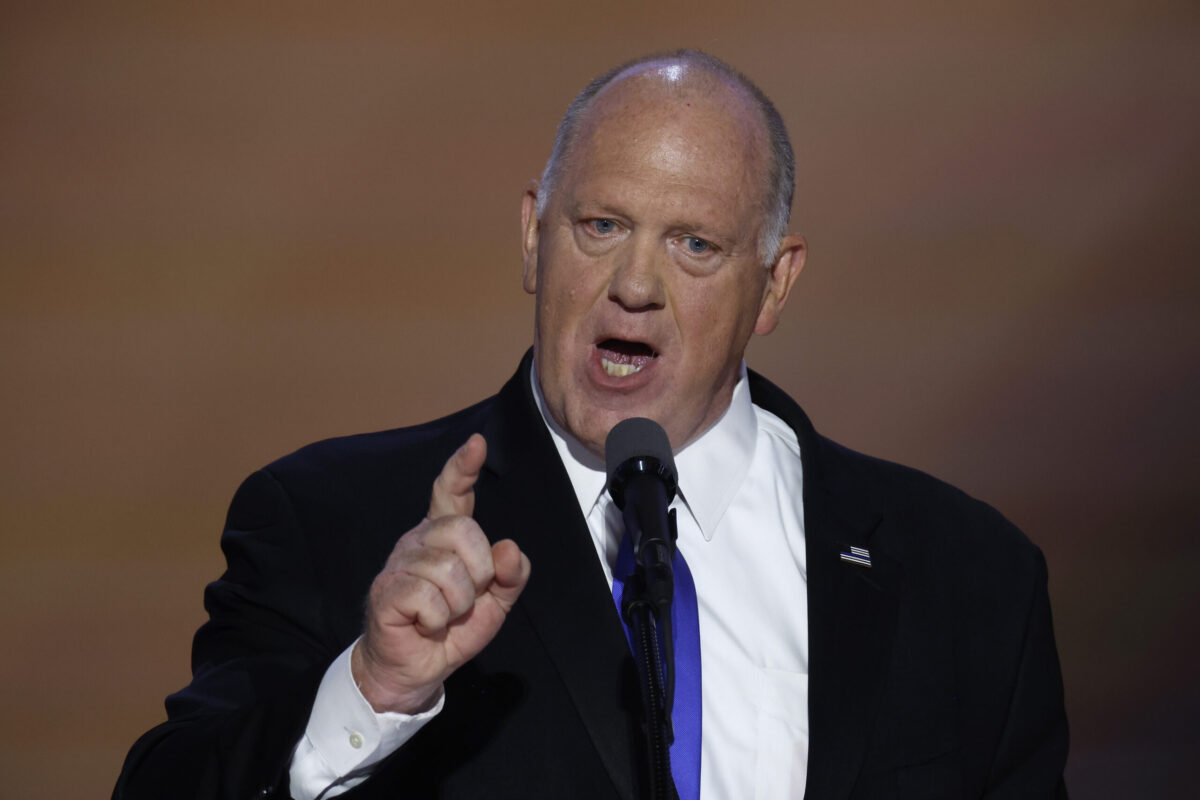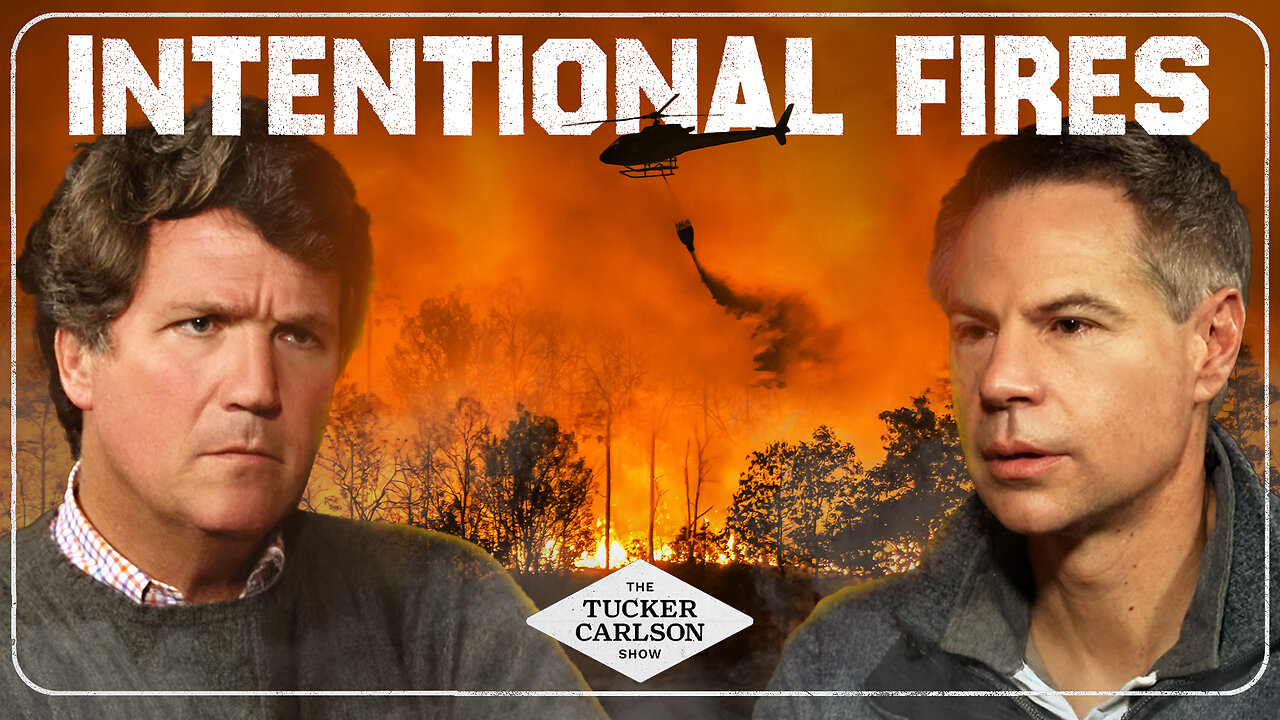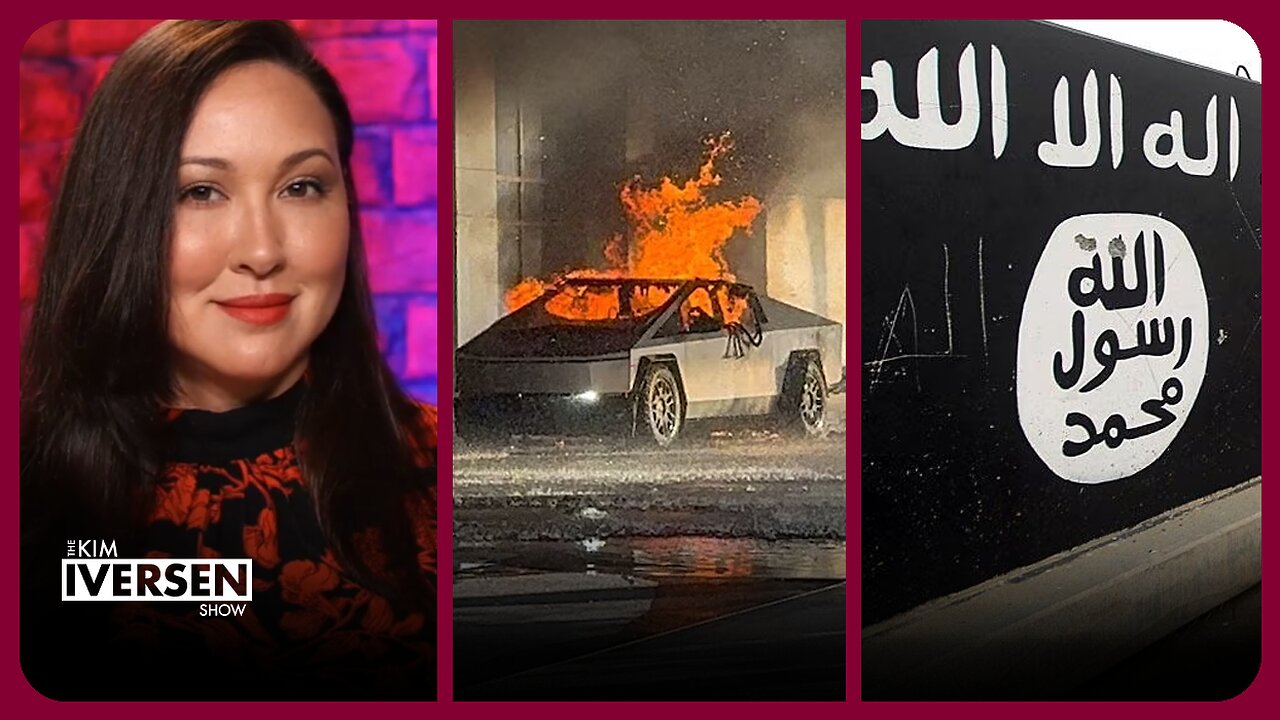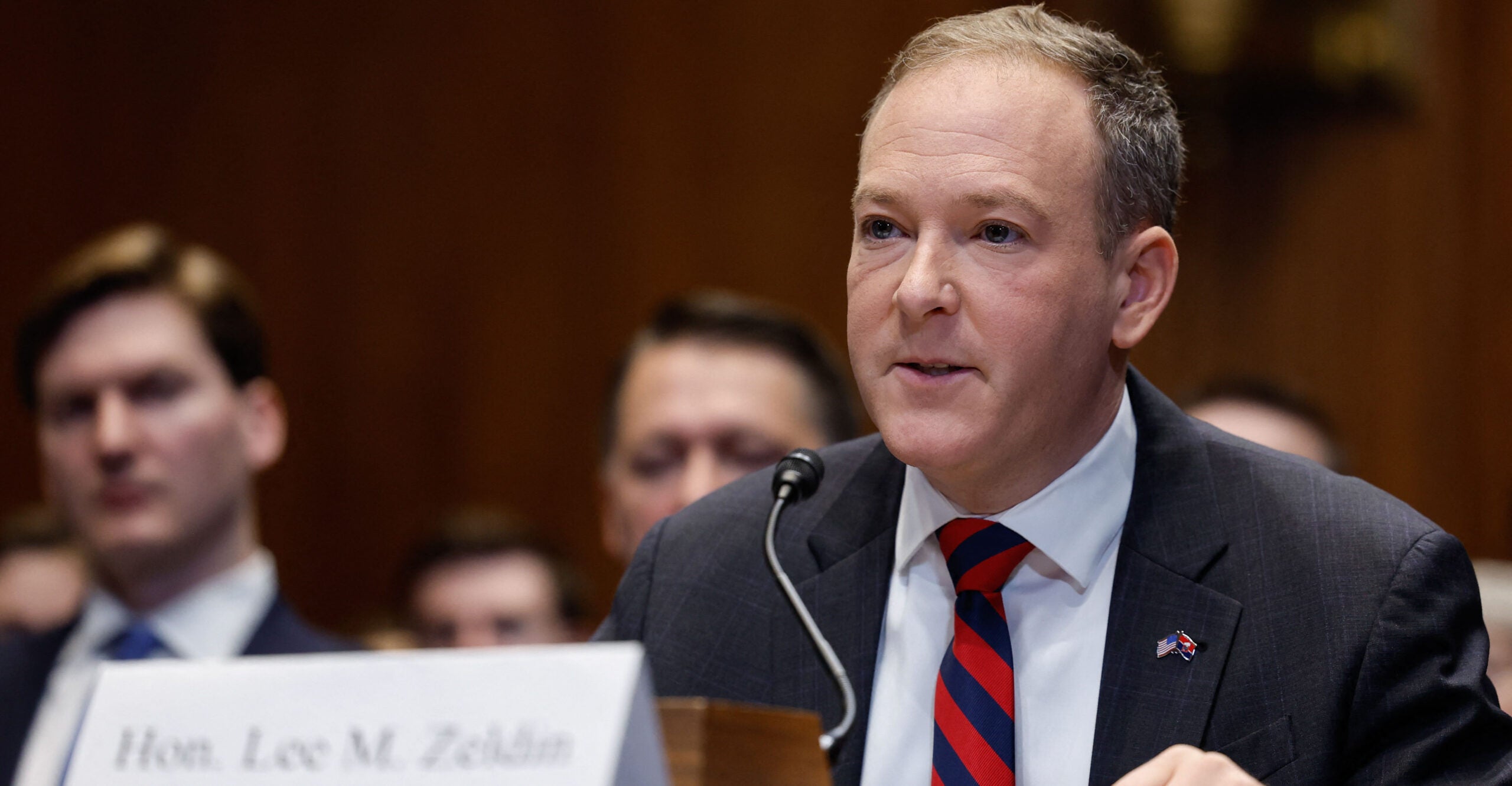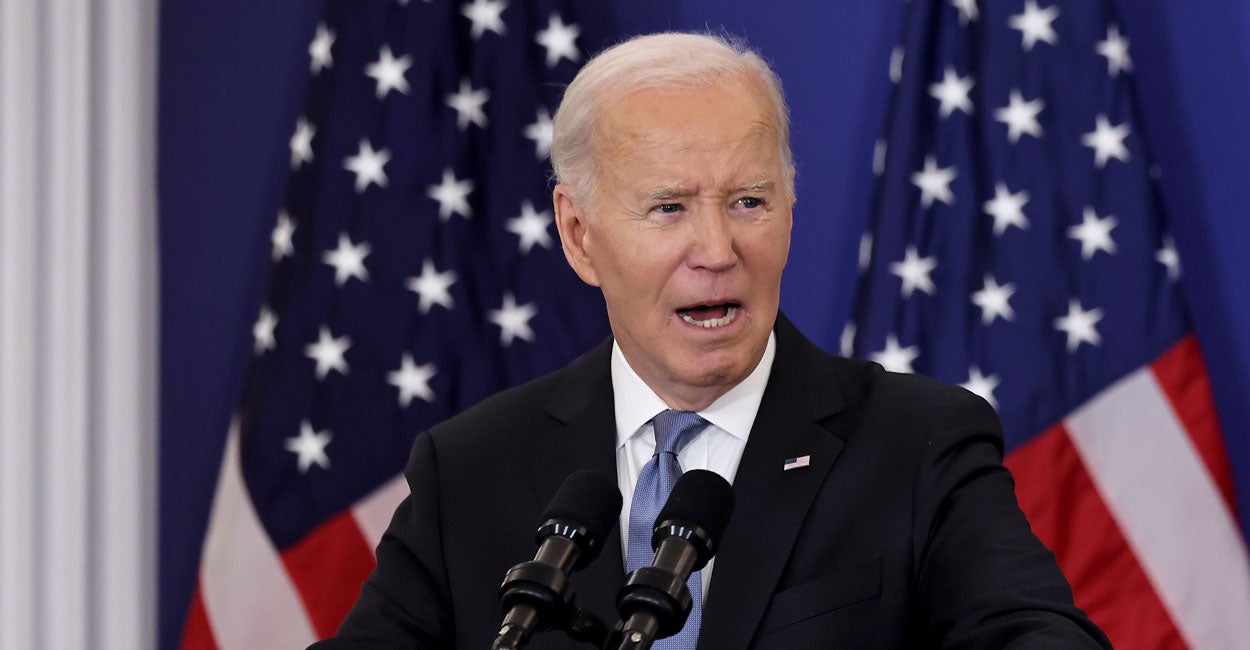Biden-Harris admin's 'pathetic' response to Hurricane Helene is all politics: Former top Pentagon official
The federal response to the devastation wrought by Hurricane Helene in Western North Carolina, Tennessee, Georgia, and elsewhere is “pathetic” and “inexcusable” compared to the massive deployment of U.S. military resources made in other hurricanes since 2017, a former top Pentagon official tells Blaze News. Casey Wardynski, assistant secretary of the Army for manpower and Reserve affairs under former President Donald J. Trump, said the failing response by the Biden-Harris administration has the hallmarks of a political decision not to help because most of the affected areas are inhabited primarily by Trump voters. “These are Americans who are apparently still in very dire straits a month after a disaster,” said Wardynski, who oversaw the Army’s manpower division from 2019 to 2021. 'I know the sense of urgency that you would’ve had with Trump. I don’t see it here.' “We have any number of folks running around our country talking about global climate change, or whatever that is, and the need to change every aspect of life to minimize [climate] change,” Wardynski said. “And yet when a disaster hits and the weather plays dirty tricks on people, they don’t seem to be able to mobilize key resources to relieve the suffering and restore the lives of Americans.” Wardynski said his criticisms are aimed at the policymakers, not the men and women with boots on the ground. “It works from the president on down in terms of allocation of resources. The military services, the Department of Defense, typically get the word from the president in terms of the level of commitment to make to these kinds of disasters,” he said. “Obviously there have been disasters with a much greater level of commitment from the national level through the policymakers than this one has.” “The people on the ground are doing yeoman work, both the folks that are there in the private capacity and the military people that are working under those circumstances — they’re obviously doing great work,” he said. “It’s not up to them to figure out whether we need a couple of engineer brigades or not. That’s up to the people at the Pentagon and the White House.” Wardynski said in the largely rural areas of Western North Carolina that are dominated by Trump voters, most of the humanitarian relief is being done by volunteers, church groups, and non-governmental organizations. “Support from the federal and even state government is very, very thin, and that should not be the case,” he said. There are 1,500 regular Army troops performing relief operations in North Carolina, paltry by comparison with the 142,000 Guardsmen who fought wildfires in 2022 or the 62,000 military troops who responded to Hurricane Ivan, Wardynski said. Elements from the XVIII Airborne Corps have been performing a wide range of duties. The National Guard had more than 11,000 troops committed to Hurricane Helene and Hurricane Milton relief missions, and nearly 2,000 remain on duty in North Carolina, officials said. The Army Corps of Engineers also has nearly 300 members on mission in North Carolina. Last week North Carolina Gov. Roy Cooper said the state was leading an “unprecedented response and recovery effort with the support of federal, local, and nonprofit partners.” The Department of Defense committed more than 16,000 personnel after Hurricane Harvey in 2017. Some 17,000 troops were deployed to Puerto Rico and the U.S. Virgin Islands after Hurricanes Maria and Irma later that same year. The U.S. military committed 17,000 troops to Haiti after a 2010 earthquake and sent 15,000 to Indonesia after a tsunami in 2005. So why only 1,500 Army troops for what many on the ground are calling “biblical” devastation from Helene? “Here we are a month later, and people have no electricity, no water,” Wardynski said. “It is pathetic.” “I know the response one would’ve seen with Trump, and I know the sense of urgency that you would’ve had with Trump,” Wardynski said. “I don’t see it here. I see it from good Americans where they just see another American as red, white, and blue. U.S. Army soldiers assigned to Bravo Company, 1st Brigade, 502nd Infantry Regiment, 101st Airborne Division (Air Assault) speak with the local community to provide debris clearance assistance at Marshall, North Carolina, on October 10, 2024. Photo by Sgt. Nicholas Session/U.S. Army “But I’m afraid some of these governmental levels, it looks like they see it through either blue or red lenses, and they’re giving it the response they think is appropriate for a time that’s drawing close to an election.” Blaze News reached out to the Pentagon for comment but did not receive a reply by press time. On Oct. 17, Blaze News asked the public affairs officer for the Army XVIII Airborne Corps why the authorized North Carolina strength was 1,500 for the hurricane and not 15,000. “It's a great question,” said Maj. Aimee J. Valles. “We at the 18th Airborne Corps, we’re not policymakers. We
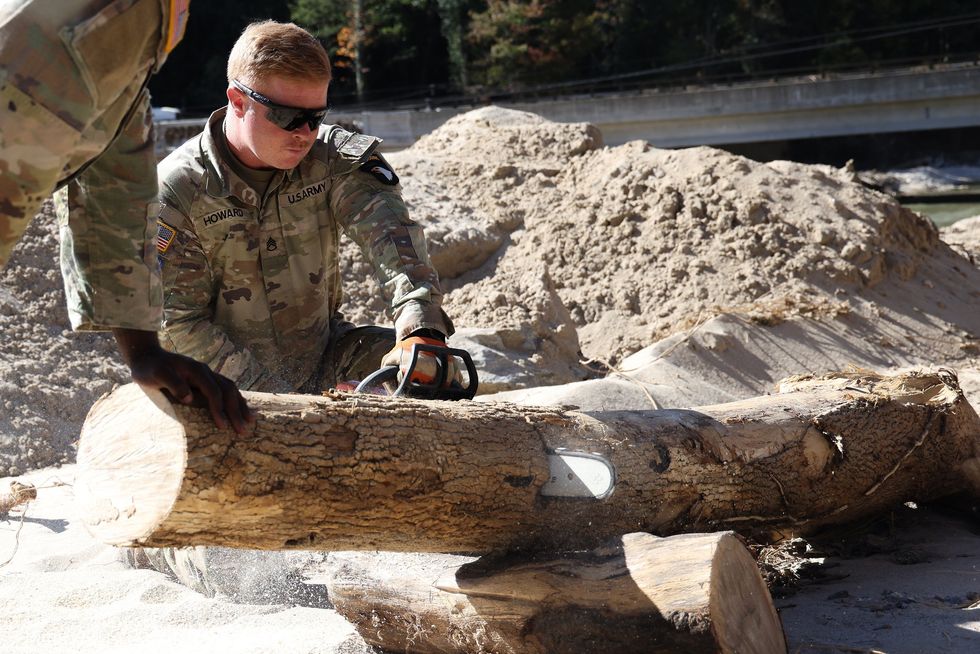

The federal response to the devastation wrought by Hurricane Helene in Western North Carolina, Tennessee, Georgia, and elsewhere is “pathetic” and “inexcusable” compared to the massive deployment of U.S. military resources made in other hurricanes since 2017, a former top Pentagon official tells Blaze News.
Casey Wardynski, assistant secretary of the Army for manpower and Reserve affairs under former President Donald J. Trump, said the failing response by the Biden-Harris administration has the hallmarks of a political decision not to help because most of the affected areas are inhabited primarily by Trump voters.
“These are Americans who are apparently still in very dire straits a month after a disaster,” said Wardynski, who oversaw the Army’s manpower division from 2019 to 2021.
'I know the sense of urgency that you would’ve had with Trump. I don’t see it here.'
“We have any number of folks running around our country talking about global climate change, or whatever that is, and the need to change every aspect of life to minimize [climate] change,” Wardynski said. “And yet when a disaster hits and the weather plays dirty tricks on people, they don’t seem to be able to mobilize key resources to relieve the suffering and restore the lives of Americans.”
Wardynski said his criticisms are aimed at the policymakers, not the men and women with boots on the ground.
“It works from the president on down in terms of allocation of resources. The military services, the Department of Defense, typically get the word from the president in terms of the level of commitment to make to these kinds of disasters,” he said. “Obviously there have been disasters with a much greater level of commitment from the national level through the policymakers than this one has.”
“The people on the ground are doing yeoman work, both the folks that are there in the private capacity and the military people that are working under those circumstances — they’re obviously doing great work,” he said. “It’s not up to them to figure out whether we need a couple of engineer brigades or not. That’s up to the people at the Pentagon and the White House.”
Wardynski said in the largely rural areas of Western North Carolina that are dominated by Trump voters, most of the humanitarian relief is being done by volunteers, church groups, and non-governmental organizations. “Support from the federal and even state government is very, very thin, and that should not be the case,” he said.
There are 1,500 regular Army troops performing relief operations in North Carolina, paltry by comparison with the 142,000 Guardsmen who fought wildfires in 2022 or the 62,000 military troops who responded to Hurricane Ivan, Wardynski said. Elements from the XVIII Airborne Corps have been performing a wide range of duties.
The National Guard had more than 11,000 troops committed to Hurricane Helene and Hurricane Milton relief missions, and nearly 2,000 remain on duty in North Carolina, officials said. The Army Corps of Engineers also has nearly 300 members on mission in North Carolina.
Last week North Carolina Gov. Roy Cooper said the state was leading an “unprecedented response and recovery effort with the support of federal, local, and nonprofit partners.”
The Department of Defense committed more than 16,000 personnel after Hurricane Harvey in 2017. Some 17,000 troops were deployed to Puerto Rico and the U.S. Virgin Islands after Hurricanes Maria and Irma later that same year. The U.S. military committed 17,000 troops to Haiti after a 2010 earthquake and sent 15,000 to Indonesia after a tsunami in 2005.
So why only 1,500 Army troops for what many on the ground are calling “biblical” devastation from Helene?
“Here we are a month later, and people have no electricity, no water,” Wardynski said. “It is pathetic.”
“I know the response one would’ve seen with Trump, and I know the sense of urgency that you would’ve had with Trump,” Wardynski said. “I don’t see it here. I see it from good Americans where they just see another American as red, white, and blue.
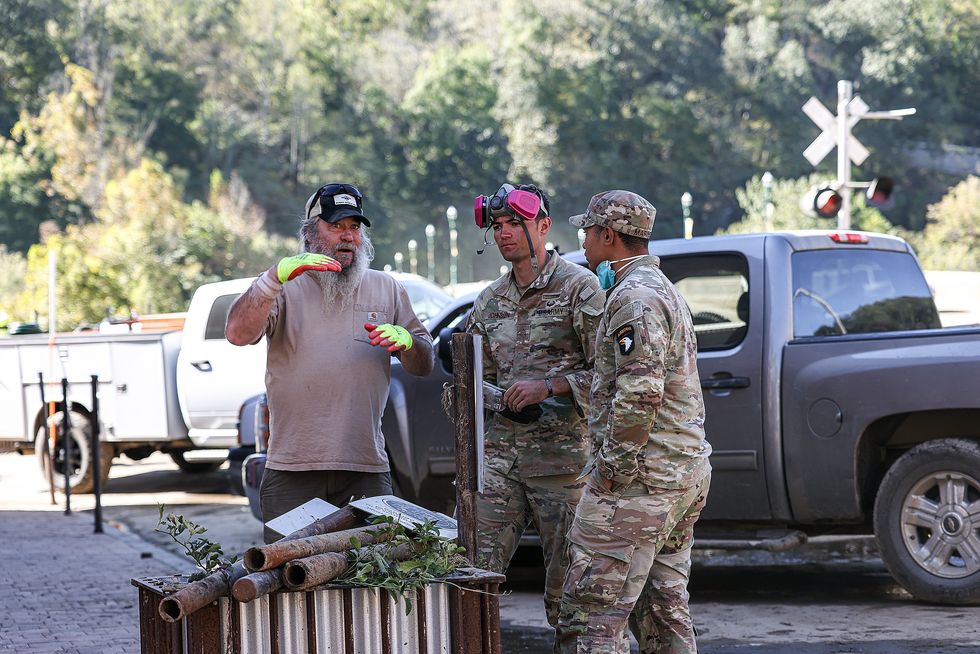 U.S. Army soldiers assigned to Bravo Company, 1st Brigade, 502nd Infantry Regiment, 101st Airborne Division (Air Assault) speak with the local community to provide debris clearance assistance at Marshall, North Carolina, on October 10, 2024. Photo by Sgt. Nicholas Session/U.S. Army
U.S. Army soldiers assigned to Bravo Company, 1st Brigade, 502nd Infantry Regiment, 101st Airborne Division (Air Assault) speak with the local community to provide debris clearance assistance at Marshall, North Carolina, on October 10, 2024. Photo by Sgt. Nicholas Session/U.S. Army
“But I’m afraid some of these governmental levels, it looks like they see it through either blue or red lenses, and they’re giving it the response they think is appropriate for a time that’s drawing close to an election.”
Blaze News reached out to the Pentagon for comment but did not receive a reply by press time.
On Oct. 17, Blaze News asked the public affairs officer for the Army XVIII Airborne Corps why the authorized North Carolina strength was 1,500 for the hurricane and not 15,000.
“It's a great question,” said Maj. Aimee J. Valles. “We at the 18th Airborne Corps, we’re not policymakers. We’re not the decision-makers for that. We allow the folks who make those decisions to make that call, right? So I’d have to refer you to the DOD. They’re absolutely the ones cutting the orders, and also the governor. So the governor made a request for the amount of troops that he needed, and so I’d refer you to him as well.”
The Department of Defense should send combat engineering brigades from the National Guard to rebuild roads and bridges, set up temporary water pipelines, and install power grids, Wardynski said.
Wardynski said the Army could quickly send the 111th Engineer Brigade of the West Virginia National Guard, the 117th Engineer Brigade of the South Carolina National Guard, and the 194th Engineer Brigade of the Tennessee National Guard. There are eight such brigades in the National Guard, he said.
“They bring a ton of that equipment to bear to clear debris, put in roadways, put in pipelines, help prepare the way to bring in power, and restore services on the battlefield,” he said. “These are the guys that built the Burma Road into China from Burma through the mountains. They can do anything if you give them a chance.”
Combat engineer brigades would bring in large construction equipment for debris removal, road construction, bridge repair, and more.
“These National Guard units are handy in these kind of gap-filling moments,” he said. “They bring their own maintenance, they bring their own fuel, they bring their own medicine, they bring their own communications, they bring their own everything. And most [private] contractors aren’t set up to operate with no communication, no fuel, no maintenance, no logistics.
“They run dozers, Caterpillars, excavators, and they put in roads and all this kind of stuff for the Army,” Wardynski said. “This should have been happening now, and we shouldn’t still be looking at logistics by helicopter. The helicopters are great for quick relief, but you can’t restore power and you can’t restore water and you can’t restore fuel very reliably with Chinooks and Black Hawks. It’s a stop gap.”
Tent cities could house large numbers of displaced residents until more permanent housing can quickly be built, Wardynski said.
“These people with no homes, I mean, these kinds of things are not long-term solutions, but they’re better than living out in the open or some pup tents you might’ve had that survived this disaster,” he said. “A month in, this doesn’t seem reasonable any more.”
Wardynski said under the federal Stafford Act, the U.S. military has a significant role to play in disaster response, and it does not require taking away from preparedness to fight war if called upon.
 Former President Donald J. Trump greets Adam Smith of Savage Freedoms Relief Operations, a group that turned a motorcycle dealership into a helipad and storm relief center, during a visit to Swannanoa, North Carolina, on Oct. 21, 2024.
Photo by Win McNamee/Getty Images
Former President Donald J. Trump greets Adam Smith of Savage Freedoms Relief Operations, a group that turned a motorcycle dealership into a helipad and storm relief center, during a visit to Swannanoa, North Carolina, on Oct. 21, 2024.
Photo by Win McNamee/Getty Images
“The Stafford Act federal law provides for federal aid to state and local government a case of a disaster,” he said. “It talks about cost-sharing. States are supposed to pay about 25% of the money. The federal government is expected to bring somewhere around 75% of money.
“That money comes through FEMA and through expenditures for things like engineer brigades that are mobilized, National Guard brigades that are brought up to scratch to respond to disasters, Reserve units that are brought up to scratch to respond to disasters.
“In the Trump years we moved heaven and earth to help in Puerto Rico. When there was a disaster there, terrific resources were expended,” he said. “Typically these resources are available, and they don’t cause you to stop doing something else to begin doing disaster relief.”
The Army Corps of Engineers has the ability to set up a power grid to serve tens of thousands of homes, Wardynski said.
“Their prime power capability is truck-mounted, can bring in 72,000 homes' worth of electricity on very quick notice. And they’ve done it before,” he said. “They did it when Trump was president in Puerto Rico. They even did it in the Maui fires. Where are they? Why are these people running off of Honda generators and fuel delivered by helicopters?”
Wardynski said the position that used to support him at the Pentagon coordinating military resources for disaster relief was eliminated by the Biden administration.
“The Biden bunch apparently didn’t see this as a priority. So that capability at the policymaking level ... that job doesn’t exist and those people don’t exist, even though had they had existed through decades before.”
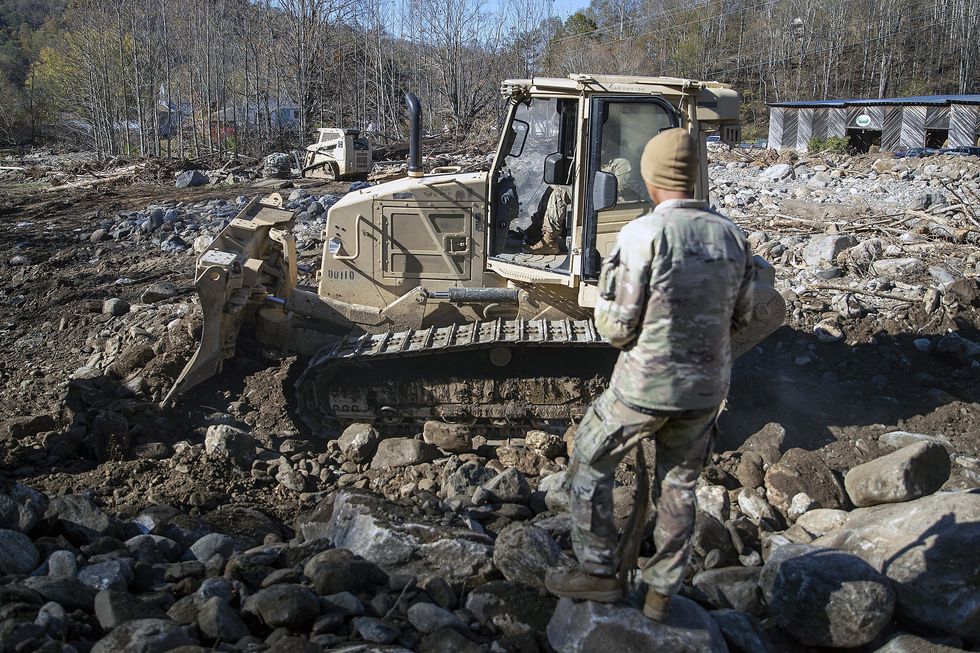 U.S. Army Soldiers assigned to 161st Engineer Support Company (Airborne), 27th Engineer Battalion (Airborne), 20th Engineer Brigade remove debris during route clearance near Green Creek in Bakersville, North Carolina, Oct. 18, 2024. Photo by Staff Sgt. Charles Brock/U.S. Army
U.S. Army Soldiers assigned to 161st Engineer Support Company (Airborne), 27th Engineer Battalion (Airborne), 20th Engineer Brigade remove debris during route clearance near Green Creek in Bakersville, North Carolina, Oct. 18, 2024. Photo by Staff Sgt. Charles Brock/U.S. Army
The military could help state and local governments by setting up temporary post offices and voting locations so that no one misses a chance to vote in the Nov. 5 election.
“There are resources that people in FEMA and the Army Guard and at the Department of the Army know about,” Wardynski said, “that could be put in place lickety-split to fly in on a helicopter, open a post office for a certain number of hours a day in these disaster areas, and collect absentee ballots and provide a way for people to communicate with loved ones and get a check and do banking and all the things you need to do.”
Wardynski said the feedback he has gotten from those on the ground in Western North Carolina leaves him with the feeling that politics continues to drive the lack of urgency to storm response.
“The resources that are coming in, flowing in, are still mostly private,” he said. “And then you've got state-level leaders bragging about a paltry response.”
Wardynski said it’s “inexcusable” that the post-Helene response is still in emergency mode.
“Roads and power and fuel and the necessities of living should be rolling in there,” he said. “And it doesn't sound like they are. We’re still at the NGO [non-governmental organization], private-citizen level of response, and it doesn’t sound like they’re getting a hell of a lot of help from the Stafford Act, federal and state level actors either.”
Like Blaze News? Bypass the censors, sign up for our newsletters, and get stories like this direct to your inbox. Sign up here!
Originally Published at Daily Wire, World Net Daily, or The Blaze
What's Your Reaction?


















